Art is a word that evades easy definition. Whether it be as simple as “a drawing” or as complex as “a piece of media that deeply affects the spirit” or a broad as any definition you could pull out of a dictionary, the idea of “art” means something different to each person – whether they be a patron or an artist themself. What gives art value, purpose? What separates good art from bad art? And is just anybody capable of creating such works?
These questions lie at the rainbow-colored heart of Chicory: A Colorful Tale, the most recent title from Greg Lobanov (Wandersong), which delves into the topic of artistic satisfaction with such grace, nuance, and pathos that it becomes its own masterpiece, a triumph of self-expression and game design that explores what it means to create – and what it means to be happy with such creations.
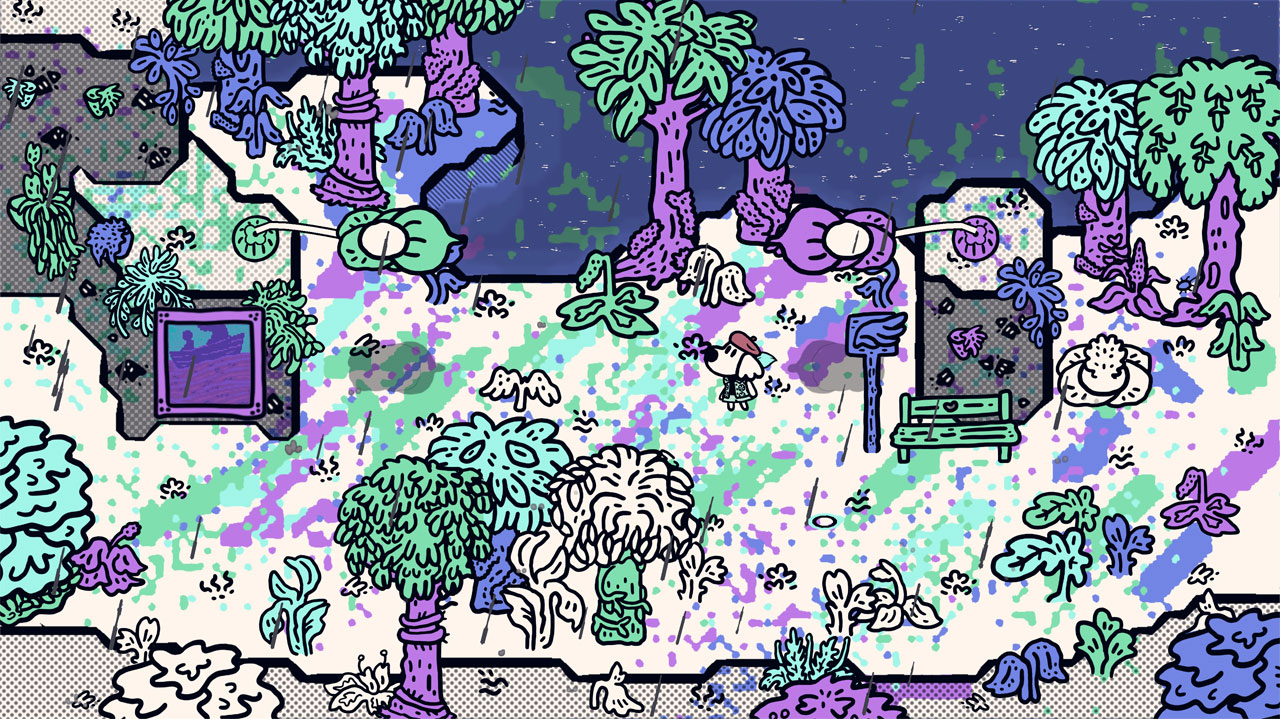
You play as a fluffy dog person (named after your favorite food, in the first of a million different charming details) who serves as janitor for the titular Chicory, the current Wielder of the Brush in the land of Picnic. As the Wielder, Chicory is charged with coloring in the world in various ways – but one day, all the color is mysteriously drained from the land, and she leaves the Brush behind for you to stumble upon. With sudden acquisition of the unique and multifaceted power of color, you set out to figure out why the colors all disappeared – and, naturally, save the world along the way.
The basic plot and straightforward writing belie a narrative rich in metaphor and theme, simple enough for a child to understand and dense enough for an adult to peel back the layers of meaning. Chicory develops from a symbol of the player-character’s affection to a crumbled lump of self-loathing to a deep and complex character, and she (and the relationship she shares with the protagonist) is as multifaceted as that of any AAA game of the past decade, if not more so. Plot devices like the Brush or the position of Wielder are not merely functions but their own symbols, allegories for more complex and challenging ideas of artistry and proficiency. It can be darkly terrifying one moment and saccharinely sweet the next. While drenched in pure sentimentality, the game never loses sight of itself for even one moment, remaining completely sincere from beginning to end without a hint of irreverence.
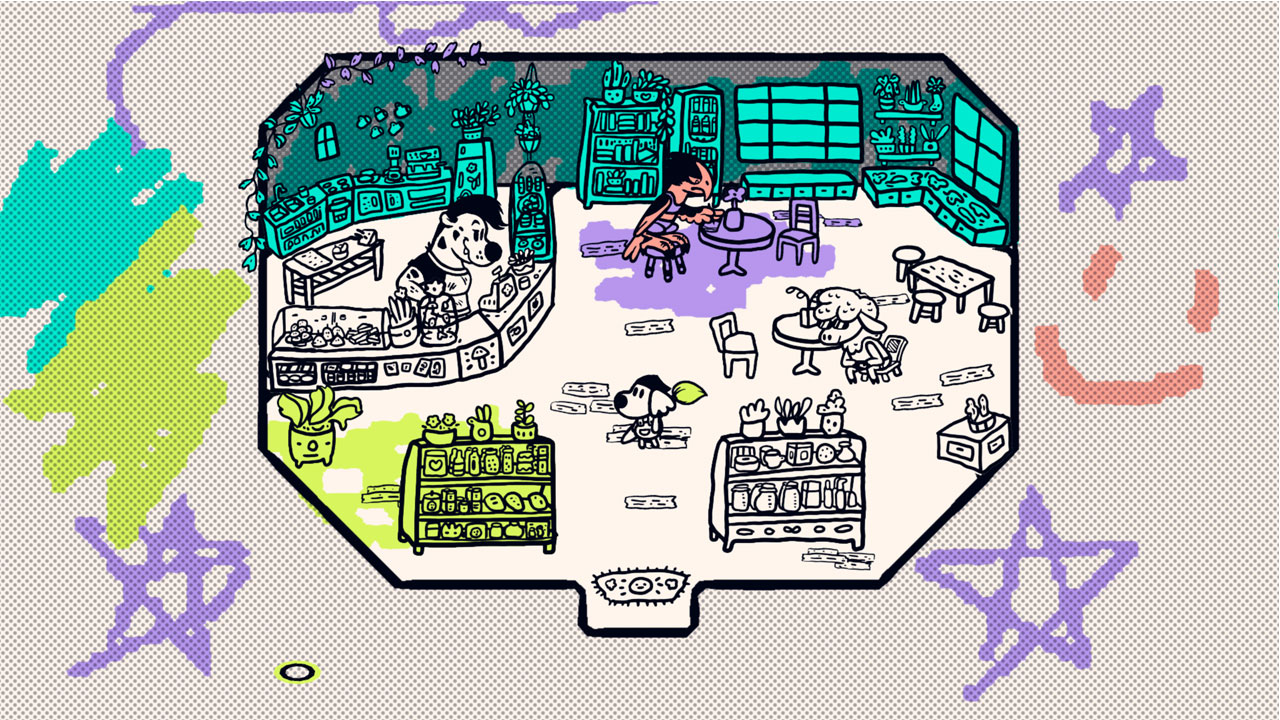
But that’s not to say the game is humorless or dry – quite the opposite. The world of Picnic is the most vibrant I can recall in recent memory, full of unique animal NPCs quirkily named after various food items, each with a personality and place in the world. They’re at near-EarthBound levels of wit, heart, and memorability, and I can think of no higher praise I can give for the denizens of a game’s world. Whether they’re offering you unique sidequests, giving you outfits, or just shooting the breeze, the overall vibe of the cast is pitch perfectly resonant.
And vibes are in abundance. Chicory might have the strongest purpose of aesthetic I’ve seen in a game besides fellow dog-paints-reality-to-save-the-world masterpiece Okami. Every screen in Chicory essentially acts as a coloring page, able to be painted in with a small selection of colors as you wish. By painting and unpainting parts of the environments, you puzzle and platform your way to progress, like a (mostly) combatless 2D Zelda. While you are offered plenty of opportunities to fulfill certain requests by the game (such as coloring houses) you’re just as easily afforded the chance to paint at your own pace, filling in trees and grass for no explicit purpose other than visual pleasure and your own artistic expression.
And that artistic expression lies at Chicory’s prismatic core. Almost every collectable you find ties back in some way to a new method to aestheticize the environment, whether it’s new outfits to wear, new brush styles to paint things in, or new decor to spruce up homes and parks. The game doesn’t judge you based on any objective metric of technical skill or efficiency, but rather simply asks you to draw in a manner that you personally want. My favorite side activity was at the art academy, which involved both making personal images to represent abstract ideas (“Joy,” “A monster,” etc.) but also recreations of finely detailed monochromatic paintings. Because your artistic tools are slightly limited, on some level you have to accept that you can’t make a perfect painting – and that’s ok. The game’s characters offer support and appreciation regardless. Some might find this praise cheap and insincere, but if you put heart into it, you get heart back.
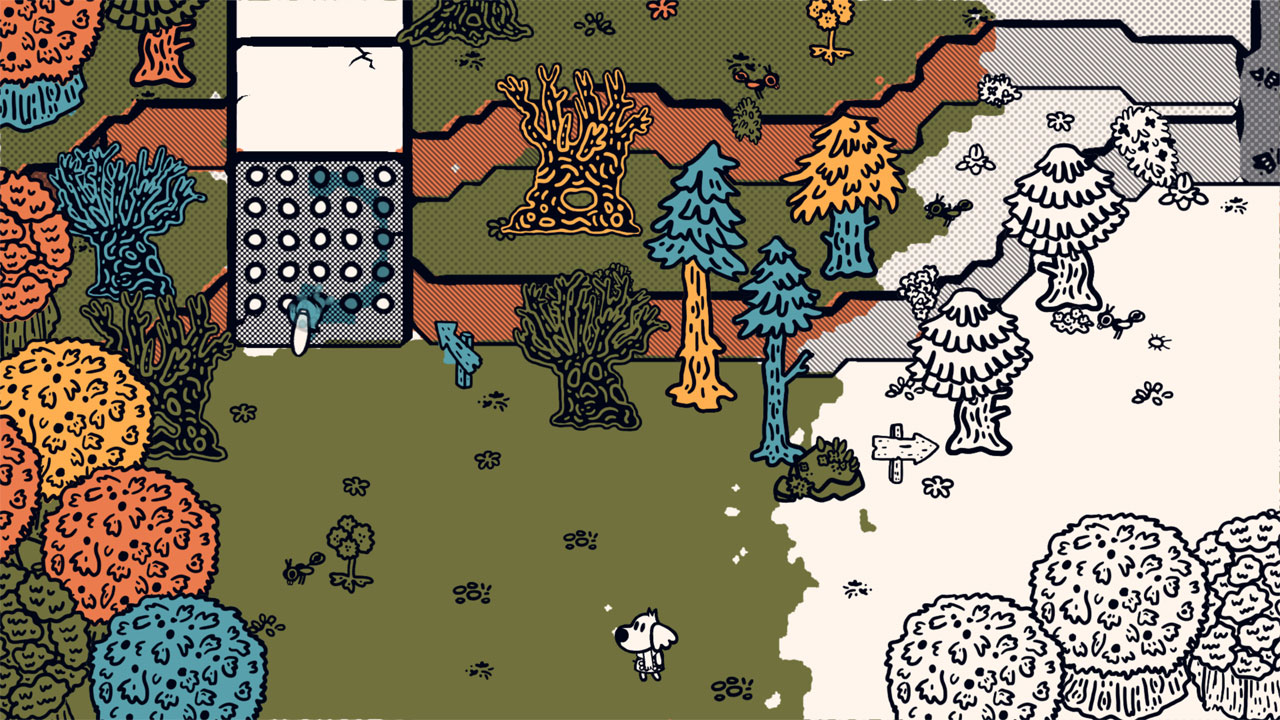
I can’t recall the last time I loved all the little details of a game so vividly. I love how you call your mom to get hints (and talk to your dad if you want things to really be laid out plain). I love how you can paint NPCs and their clothes at just about any time regardless of circumstance. I love the music by Celeste’s Lena Raine, who provides wholesomely chipper tracks alongside those that sound like the aural manifestation of a mental breakdown. The fact that this game was only made by five people (Lobanov, Raine, sound designer Em Halberstadt, artist and animator Alexis Dean-Jones, and environmental artist Madeline Berger) focuses the personality and vigor, and you can feel each person’s hand in shaping the game into what it is.
No game is ever perfect, of course, but I struggle to even think of any half-hearted nitpick I would offer for this one. Performance jitters on Switch? I can count the number of times it happened on one hand. A little bit of obtuseness to get 100%? I got 97% before the ending without looking at a guide based on nothing but curiosity and observation, the design is that good. The game is too sappy? I’d never say that. Give me MORE sappy games. Especially when they have as much going for them as this one.
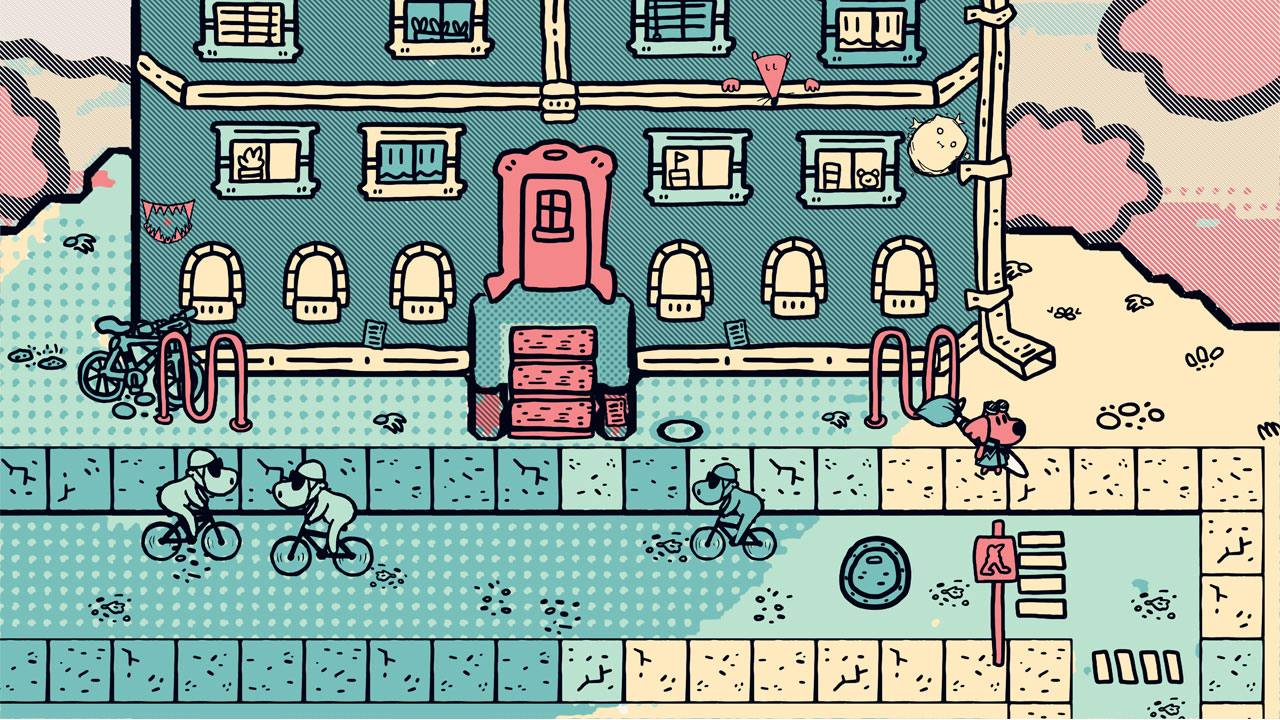
There’s so much more I could go on about – the customizability, the perfect pacing and length, the world map thrice as rich and dense as Zelda 1’s, the little moments of LGBT rep, the charm of all the names, how it manages it be more than the sum of its already gorgeous parts – but I don’t know if I’d be able to stop. Chicory: A Colorful Tale is a special game, one as finely crafted as it is sentimentally inspired, brimming with color for an experience so seemingly monochromatic.
There’s only one word for it: art.
Leave a Comment
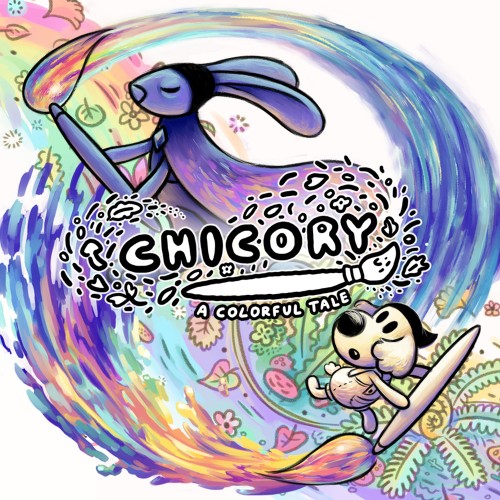
System: Nintendo Switch
Release Date: December 15, 2021
Categories: Adventure, Puzzle
Publisher: Finji
Developer: Finji


